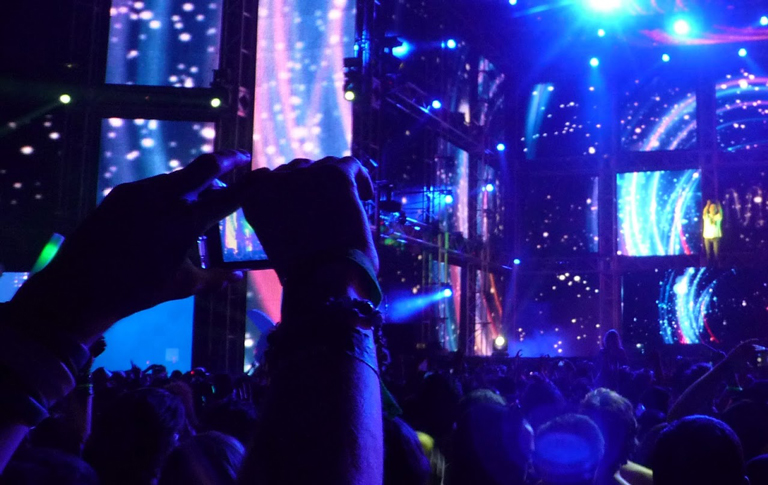Architecture is deeply woven into the fabric of human history and culture, and its influence cannot be underestimated. Born of the fundamental human need for shelter, the art of designing and constructing buildings has generated countless inspiring and commanding structures across the globe. From a humble cottage to iconic works such as the ancient pyramids of Egypt or the Sagrada Familia in Barcelona, Spain, architecture influences our daily lives and our environment. Winston Churchill once said that “we shape our buildings; thereafter they shape us.” It is no surprise, then, that architecture has provoked, and continues to provoke, interesting and often heated debate. In this article, Dr. Jorge Ortega, Professor of Civil Law at the Universidad Complutense Madrid, Spain, considers some of the controversies that have arisen, specifically in relation to the protection of architecture as a creative work and the rights of architects in their creations.
The long road to protection

The pyramids of Egypt are among the largest
and oldest surviving structures of humanity and
the subject of a recent copyright controversy.
(Photo: iStockphoto/cinoby)
Architecture is defined as the “art of designing and constructing buildings”. It is both a functional and an artistic endeavor. This explains why architecture has provoked so much controversy through the ages. While architecture provides a blueprint for the design of structures for human habitation, these structures are so much more than merely utilitarian or functional. Architecture conceptualizes space and ensures that a structure is both habitable and in harmony with the surrounding environment. At times these structures are genuine works of art, providing inspiration and conferring a sense of well-being. They have the power to shape our lives and change our perceptions. Architecture, however, has not always been recognized as worthy of protection under copyright law. The following discussion demonstrates that, in many jurisdictions, this remains a thorny issue.
The legacy of the Pharaohs
One issue that continues to fuel intense debate is whether it is legally possible to reproduce an architectural work located on a public site without the architect’s permission. Many national laws allow for the reproduction of such “publicly situated” works in the context of limitations to the right of reproduction which is one of the exclusive rights authors enjoy under copyright law.
A recent controversy involving one of humanity’s most ancient architectural complexes and artistic marvels, the pyramids of Egypt, shows that at times this limitation can lead to political complications and can be very difficult to apply. In 2008, Zahi Hawass, Secretary General of Egypt’s Supreme Council of Antiquities (SCA), made a case for establishing a copyright law that would allow claims for damages against authors of reproductions of the pyramids, the Sphinx and all other ancient monuments. This would mean, in practice, that Egyptian and foreign artists could only benefit financially from their drawings or illustrations of Egyptian and pharaonic monuments if the reproductions were not exact. But how would an exact reproduction be identified?
Would the Luxor Hotel in Las Vegas, U.S., be considered an exact reproduction? The hotel’s web page describes it as “the only building in the shape of a pyramid in the world”. In the context of the proposed new law, this led some commentators to claim that the American hotel complex should share a proportion of its profits with the Egyptian city of Luxor, the site of the legendary Valley of the Kings. When journalists asked Mr. Hawass about this, he replied that, in his opinion, it was not an “exact copy of the pharaonic monuments, despite its shape”, stressing that its interior was significantly different from that of the pyramids. This would suggest that an identical reproduction of a structure’s exterior is permitted as long as the inside is different, and vice versa. Given the sensitivity of the question and its potential fallout the law is yet to be adopted.
Image rights and brands - the Auditorio de Tenerife

The image of the Auditorio de
Tenerife, designed by Spanish
architect Santiago Calatrava, is
protected under trademark law.
(Photo: Auditorio de Tenerife/
JoséRamón Oller)
While the idea of paying to reproduce pharaonic works may seem unpalatable to many, other owners of landmark buildings have adopted a modified approach. For example, while there are no restrictions fro tourists wishing to photograph the Auditorio de Tenerife in Spain, the owners have clearly set out the terms of use of the building’s image for commercial operators.
In 2003, the image of the Auditorio was registered as a trademark, and its use “whether photographic or illustrated, of all or any part, and the use of the logo or any element that defines the same, is regulated within the legislation in force1 which covers the use and enjoyment of any registered trademark”2. The Auditorio charges commercial operators for using its external space for film and photography and requires that the final product be cleared with the relevant department of the Auditorio prior to publication. A deposit is also required to guarantee proper use of the images.
Competing rights – striking a balance
Under certain national copyright laws, the moral rights of creators are not limited in time; they are perpetual. This can create difficulties for those who own buildings and subsequently seek to renovate or modify them. Colombia is one of the few countries in the world to have an established copyright law that seeks to balance the moral rights of architects and the rights of building owners. Article 43 of Law 23 of 1982 on Copyright essentially states that if the owner of an architectural work wishes to modify it, the architect of that work has no legal grounds on which to stop this. It does, however, add that the architect “may prohibit his name from being associated with the modified work”.
Some commentators believed that this was unconstitutional and moved to have the article repealed. The Constitutional Court of Colombia, however, did not agree and, in its judgment3 of November 4, 2010, ruled that Article 43 was in fact constitutional in that it “does not breach the normal exploitation” of an architect’s rights in his work, and that “the damage caused is justified” and in line with constitutional interests.
This practice is uncommon in Europe where the right to the integrity of a work includes protecting it against any unauthorized material modification or against damage to the author’s reputation. European laws governing the protection of architectural works do not favor building owners. However, under certain circumstances, for example, when health and safety issues arise, a building owner may be authorized to modify a building. In these instances, most national laws accord architects the right to choose not to appear as the author of the modified the work.
The right to the integrity of a work

The Sagrada Familia church in
Barcelona, Spain. Designed by
Catalan architect, Antoni Gaudí
(1852-1926). One of Europe’s
architectural landmarks. (Photo:
Istockphoto/Rainer Walter Schmied)
The United States Copyright Act offers an interesting precedent. It provides a detailed system for resolving conflicts that arise when the architect’s interests, in terms of maintaining the integrity of a work, collide with those of the building owner who wishes to restore or modify the building, not to maintain its material structure but to boost its economic value or improve its appearance.
Article 113 of the Copyright Act distinguishes between “a work of visual art [that] has been incorporated in or made part of a building in such a way that removing the work from the building” will cause “destruction, deformation, mutilation or other modification to the work”, and those which can be removed from buildings without substantially modifying the original design.
If an artist (or an architect) agrees in writing to one of their works being installed in a building, acknowledging that it may be subject to “destruction, distortion, mutilation, or other modification, by reason of its removal,” the building owner can proceed with its removal without the artist’s authorization and is under no obligation to inform the artist about the work being carried out.
However, where a building owner wishes to remove a work of visual art that is part of the building and that can be removed without its being destroyed, distorted, mutilated, etc., the owner must make a “diligent, good faith attempt” to inform the artist, who then has the opportunity to collect the work at the artist’s own expense within 90 days.
Classic infringement of moral rights
A classic case of the infringement of an architect’s moral rights arose in Australia in relation to Sydney’s landmark Opera House. In 1959, Danish architect Jørn Utzon won an international competition to design a performing arts complex. After various delays in the building’s construction, a team of Australian architects took over the project and modified the internal layout of the building. In so doing, they considerably limited its original configuration as a multipurpose hall.
At that time, architects in Australia did not have moral rights in their architectural works, so Mr. Utzon was unable to contest the new design in the courts. Only in 2000, with the approval of the Copyright Amendment (Moral Rights) Act, did architects acquire the right to be identified as the author of a work, or the right to be consulted with respect to any changes planned to buildings they had designed.

The Danish architect Jørn Utzon who won an
international competition to design the Sydney
Operal House in 1959 did not enjoy the same
moral rights architects enjoy today under the
Copyright Amendment (Moral Rights) Act
adopted in Australia in 2000. (Photo: iStockphoto/
Phillip Danze)
Inspiration or plagiarism?
The challenge of drawing a line between inspiration and plagiarism is another source of tension among architects. In April 2010, just a few hours before the opening of World Expo 2010 in Shanghai, a heated debate flared up about the originality of the Crown of the East, the name of the Chinese Pavilion. Various Chinese architects leapt to the defense of this 60-meter high inverted pyramid which dominated the Expo site. Others claimed that it bore a marked similarity to the structure of the Japanese Pavilion at Expo 1992 in Seville, Spain, designed by Japanese architect Tadao Ando. Still others compared it to the Canadian Pavilion at Expo 1967 in Montreal, Canada. While the similarities were striking, the Japanese construction was the centerpiece of a more decorative ensemble, whereas the proportions of the Chinese Pavilion were quite different.
Ni Yang, the assistant designer of the Chinese Pavilion, refuted accusations of plagiarism, claiming that “there are differences between his work and mine. His work had a decorative purpose; mine is a building. Pavilion style is widely used in architectural design, so it cannot be said that it is the creation of Tadao Ando”.
What is certain is that infringement can occur at any stage of an architectural work – from plan to plan, plan to building, building to plan and building to building. As the famous Spanish architect Gaudí said “my ideas have an unquestionable logic; what I can’t understand is why they have not been applied before,” underlining the fact that sometimes it is impossible for architects to know whether their ideas are truly novel or whether they have been conceptualized before.
The future
Today architecture faces many challenges. While the IP rights of architects are sure to continue to spark heated legal battles, the practice of architecture will have to become more people-focused, particularly in light of recent natural disasters. Reconstruction will be one of the key themes of the 24th Congress of the International Union of Architects (IUA) to be held in Tokyo in the autumn of 2011. A move towards a more transparent, coherent global practice in architecture, which enables architects to be more closely connected and more aware of the work of their counterparts elsewhere, would certainly help reduce the number of IP-related lawsuits.
__________________________
1 Law 17/2001, 7th December, of Trademarks
2 See www.auditoriodetenerife.com/localizaciones/procedures/procedimiento_ing.pdf
3 File D-8103/2010, Judgment C-871-10



